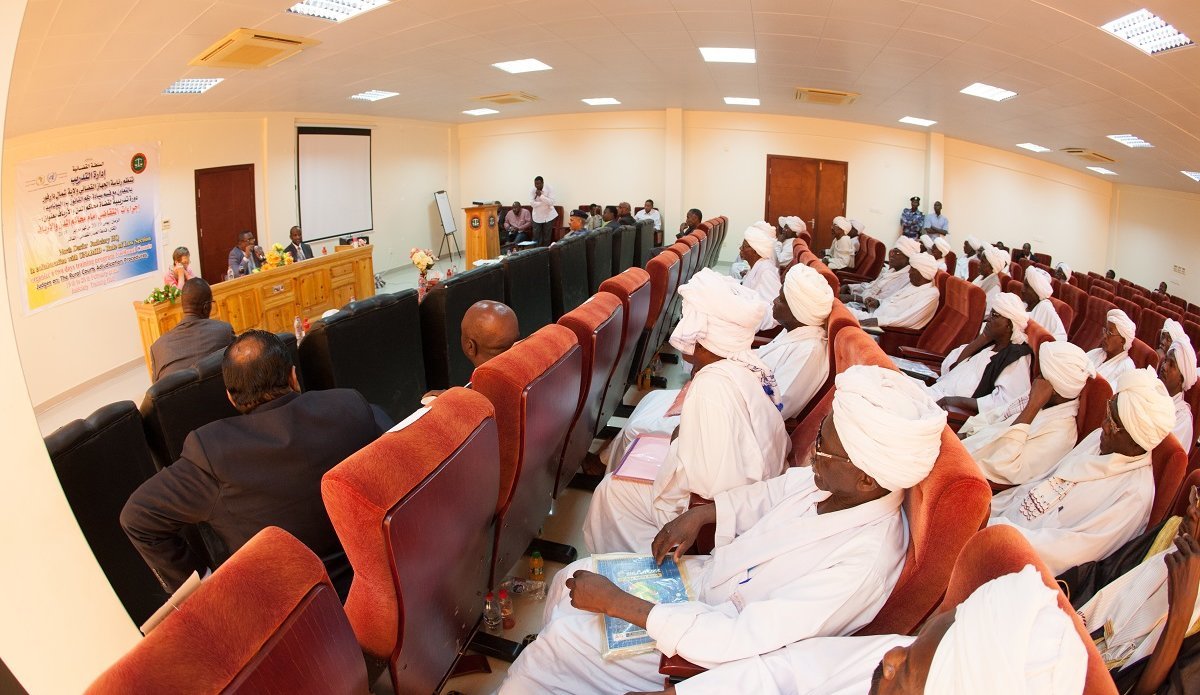Photo by Amin Ismail, UNAMID.
Some 30 rural court judges from various localities in North Darfur participated in a two-day, UNAMID-supported training on court adjudication procedures held on 19-20 February 2018 in El Fasher.
The workshop was facilitated by the Mission’s Rule of Law section and aimed at disseminating the contents of a hand book for rural court judges developed jointly by UNAMID and the Sudan Judiciary,
which takes into account the needs of rural court judges across Darfur, who often have no formal legal training. It is designed as a topical, easy-to-use reference to help them dispose pending civil and criminal cases in accordance with Sudanese law.
In the course of the workshop, participating judges called for reinforcing the role of rural courts in conflict resolution through specific capacity-building exercises. Furthermore, they requested the endorsement of a law clearly identifying the jurisdiction of North Darfur rural courts, particularly with regard to cases and claims of land ownership.
Addressing workshop participants, Sameer Sayed, Chief Judge, North Darfur, emphasized the importance of such training activities in enabling rural court judges to understand and implement due procedures to ensure justice is served; while Shareef Adam, on behalf of participating judges, spoke of the benefits of the handbook and said that the manual, along with the two-day intensive training, will greatly help rural court judges.
On her part, Francoise Simard, Head, Rule of Law, UNAMID, stated that this endeavor is part of the Mission’s continuing efforts to strengthen the institutional capacity of rural court judges to address land disputes and other conflict drivers.
The United Nations Security Council Resolution 2363 (2017) mandates UNAMID to continue to focus on providing advisory and logistical support to strengthen rural courts’ capacity to address land disputes and other conflict drivers.

